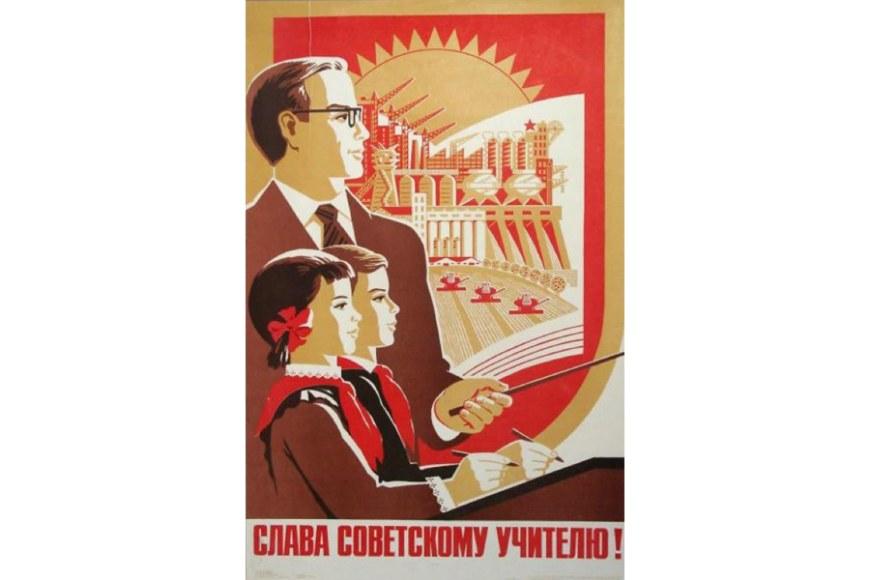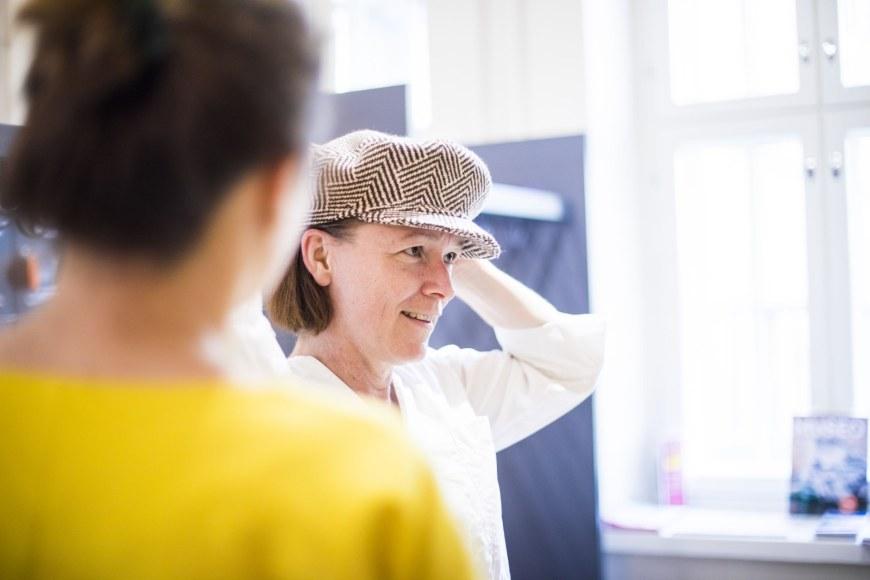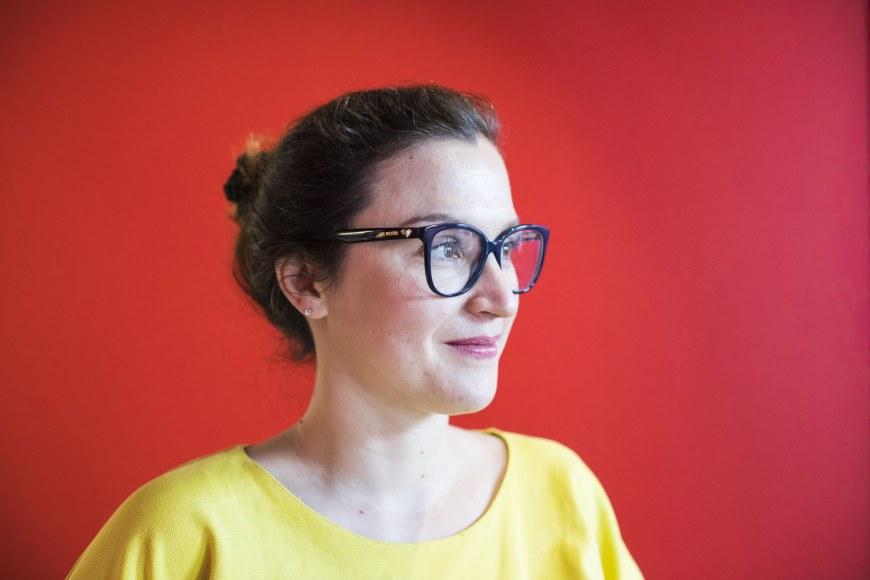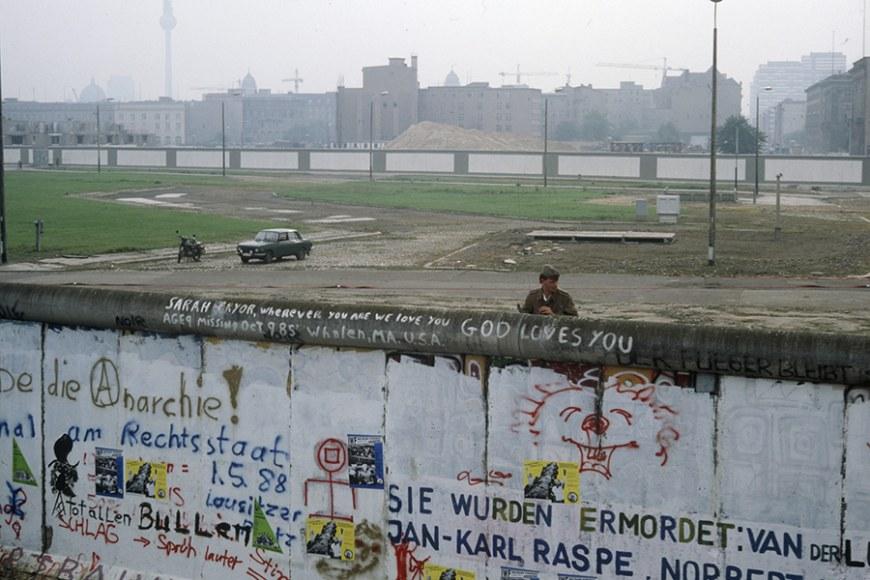Warm childhood memories despite the Cold War

This article was originally published in Unit, the magazine of Tampere Universities.
After World War II, the Cold War divided the world along ideological lines with the Eastern bloc adopting socialism and the Western world holding onto capitalist and democratic ideals. The threat of nuclear war loomed ominously overhead with both sides vying for world dominance.
Besides the official story, there is a largely overlooked part of history. How did the world appear to children growing up in the Cold War era?
Associate Professors of Education Zsuzsa Millei and Nelli Piattoeva of Tampere University and Professor Iveta Silova from Arizona State University, USA, are heading a research project funded by the Kone Foundation to collect memories of growing up during the Cold War. The project involves 93 participants from all over the world. They attend workshops to reminisce about their childhood lived on either side of the Iron Curtain.
“The sharing of memories is the only way to travel back in time and tap into childhood experiences that have gone undocumented. It gives us a glimpse into how children lived and viewed the world,” Nelli Piattoeva says.
Finland remained neutral during the Cold War, which shows in the memories.
“Finns remember their teachers talking about the divisions without taking sides, wanting to understand both parties. They even remember listening to news on the Soviet radio in class so that they received a balanced view of the events,” Millei says.
The ongoing project demonstrates that children become politically and socially aware much sooner than society might anticipate. The findings give rise to important questions about how today’s children perceive current politics, including populism and the increasing support for far-right groups.
Children do what they feel is right
How did children learn about the prevailing political environment in the Cold War years? Did they hear their parents talking about the conflict? Did they watch the news? How did schools and teachers play into it all?
The two researchers point out that children cannot be spoon-fed ideology. In the 1990s, traditional notions of children as passive recipients of socialisation were overturned following the rise of childhood studies. It was understood that children follow current events and are affected by disturbing news well before they reach voting age.
Millei and Piattoeva do not buy into the idea that children were brainwashed into embracing, for example, socialist ideology during the Cold War.
“Rather than passive recipients of the socialisation process, children are active agents who do not only reinterpret but also resist social norms. This perspective is missing from existing Cold War literature,” Zsuzsa Millei says.
Besides, children and youth can also have their own motives for behaving in an ideologically acceptable way.
“Some of the participants remember behaving as expected and wanting to help their country but not necessarily for ideological or political reasons,” Millei says.
Many children sincerely believed in helping others and therefore took an active part, for example, in fund-raising efforts and other campaigns.
One memory comes from a book edited by Silova, Piattoeva and Millei titled Childhood and Schooling in (Post)Socialist Societies: Memories of Everyday Life that explores the childhood memories of people who grew up in socialist countries. It is about a school cycling contest. The teacher asks the class which of the boys would like to enter the contest. As one of the girls loves cycling, she does what she feels is right: she ignores the teacher's gender-biased question and signs up.
“Children are social and political agents even within societies where there is strict hierarchical control,” says Piattoeva.
“It is not possible to predefine the role that a child will assume in everyday life.”

Against the rise of the far right
Admittedly, life was ideologically charged for children during the Cold War. The researchers say that it is easily forgotten that children are now living in a politically charged environment as well.
“Climate change, nationalism, even our eating habits: we are continuously conveying our values and beliefs to our children even though we think they might be too young to understand,” Millei points out.
“Memories show us how children perceive and enact adults’ values and which of the values they embrace and which they reject.”
Right-wing politics and populism have been gaining ground worldwide in recent years. According to Zsuzsa Millei, we need to remain alert to the signs of how our children and teenagers understand these concepts. History teaches us not to stay silent.
Since the Soviet Union collapsed in 1991, many of the former Soviet republics have kept quiet about their past while others have engaged in a form of nostalgia for the past regime. Telling family stories of socialism can be easily interpreted as supporting communism.
“It might be that this silence is among the reasons for the growth in support for the far right. There are millions of people in the world whose stories have gone unheard because they have been on the wrong side of history. In many post-socialist spaces today far-right groups and populism are becoming increasingly appealing to younger generations who feel alienated from mainstream politics as current political discourse overlooks their parents’ experiences, except if framed in a negative light.”
Piattoeva points out that reticence about the past is especially a problem in the former Soviet republics.
“It is not so much that the so-called Western world is not interested in these memories. On the one hand, these countries have chosen to stay silent about their history after the fall of socialism. On the other hand, socialism is looked back on longingly and nostalgically, for example, in modern-day Russia.”
There are millions of people in the world whose stories have gone unheard because they have been on the wrong side of history.

Children all over value the same things
Childhood memories are unique regardless of whether that childhood was spent in the East or West. The experience of growing up in the Cold War years depends on the narrator’s family, home country and the decade. Based on childhood memories, there appear to be more similarities than differences between the two camps.
Piattoeva and Millei were born in former socialist countries, whereas their husbands come from the Western world. Still, they have noticed that they share similar childhood experiences with their spouses. They remember playing the same games and collecting the same things.
“The Eastern and Western worlds were influenced by each other more than we have been given to understand,” Piattoeva says.
On a larger scale this shows, for example, in the space race that developed between the Cold War rivals. When the Soviet Union launched Sputnik, it prompted the USA to step up its efforts to conquer space and make broader economic investments, for example, in education. A new world of possibilities opened up for science and research.
“Suddenly American researchers realised that the socialist world had an effective education system as they could carry out high-impact research. How did they do it? As a result of the space race, the Western education system adopted the theory of human capital.”

The many phases of socialism
According to the researchers, we still have pervasive stereotypical notions of what life was like during the Cold War, especially in socialist countries.
“All the Cold War contemporaries were victims of an oppressive regime and were not allowed to think for themselves or live freely,” Piattoeva describes some of the common stereotypes.
The researchers are even ready to question the East-West divide when talking about the Cold War.
The countries that represented the Eastern bloc tend to be lumped together although socialism took many forms in different countries and at different times. For example, Cuba, the Soviet Union and China adopted widely different forms of socialism. In Hungary, where Zsuzsa Millei was born, the socialist system passed through two phases, with tighter political control during the first.
“Restrictions were loosened to quell growing discontent among the people. The access to imported consumer goods increased, people were allowed to travel more freely and there was no longer a shortage of food,” she explains.
Emotional connections
The researchers used a new method to explore memories of growing up during the Cold War. They invited researchers, teachers, artists and academics to share their memories in collective workshops. Later on, the research participants will use their memories as data and inspiration for their art or research.
The project involves numerous experts in fields ranging from anthropology, chemistry and political science to literature, dance and photography.
In addition, a Hungarian theatre company is writing a family drama based on the memories. The piece will be performed in Budapest, Tampere, Manchester and eventually at an international conference in the United States. An exhibition showcasing the stories and an expanding archive of photographs, objects and art will be touring museums and galleries around the world.
The stories will also be stored in an open-access digital archive that allows users to access and engage with the content as well as contribute their own Cold War memories.
The more stories the researchers read, the richer and more diverse their research data becomes.
“The existing literature on the Cold War ignores the fact that there are multiple levels in society, not only an ideological one. These memories allow us to discover something new about the everyday life of Cold War societies from a child’s perspective as told by adults,” Zsuzsa Millei points out.
The most important thing is not only to record the memories but also to share them. Millei and Piattoeva have been delighted to see how the stories affect the participants and create strong emotional bonds between them as they recognise their shared humanity and realise connections in their childhood memories. This is one of the main goals of the research project.
“The sharing of memories is one way to build bridges across borders now that the politics of walls is rising,” says Nelli Piattoeva.
The research project titled Re-Connect / Re-Collect: Crossing the Divides through Memories of Cold War Childhoods is conducted at Tampere University to bring people together from all over the world to share childhood memories from the Cold War period.
Cold War
- The Cold War was a period of geopolitical tension that lasted from the end of World War II in 1945 until 1991.
- The conflict was between the United States, the Soviet Union and their respective allies.
- The collapse of the Soviet Union marked the end of the Cold War.

Author: Tiina Lankinen





